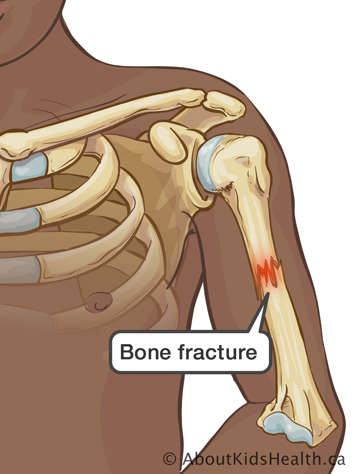If your child has osteoporosis, you might be afraid of causing a bone fracture while caring for them. However, holding your baby is one of the best things you can do to comfort them and help them develop. Even if your baby has recently had a fracture, holding and cuddling them can be a very effective way to soothe and manage their pain.
You will need to take care with any child who has osteoporosis. The tips below will minimize the risk of fractures in children with a type of osteoporosis called osteogenesis imperfecta.
Holding a baby with osteoporosis
Supporting your baby
-

Until your baby has full head control, gently place your hand behind their head and cradle it for support.
-

When holding your baby, try to spread out your hands to support the head, back and pelvis. This spreads out your baby's weight and means there is less stress on any single part of their body.
-

Use your body to support your baby when you move from a horizontal to a vertical position, for example from lying down to sitting up.
Encourage your baby's older sisters and brothers to hold your baby's hand or give your baby gentle kisses instead of holding your baby on their own.
Comfortable positions
-

Use your fingers, arms or chest to keep your baby's arms and legs contained in front of them. This is often a more comfortable position for your baby and allows them to explore their hands and arms. This is great for helping them develop!
-

Brace your baby against your chest while you move up and down. This is a safe alternative to "burping" to help release gas.
While your baby is awake, try to have them experience different positions such as being on their side or, when they have head control, on their tummy. This allows your child to learn about their body and help them control different muscles. It also helps reduce the risk of stiffness in the joints and potential flattening of the back of your baby's head.
Lifting your baby
-

Do not lift your baby from under their arms. When changing your baby's diaper, lift your baby by their buttocks, not by their legs or feet.
Handling osteoporosis in a child
- Encourage your child to play and be active as they get older and start to move around on their own. Although fractures are a risk, your child needs to explore the world around them as part of their development.
- Encourage your child to play on the floor to prevent falls.
- Discourage your child from climbing on chairs, tables or other raised surfaces.
- Remove any objects from the play area that may hurt your child (such as sharp tables or hard objects that could fall).
- Encourage your child's playmates to be gentle and avoid rough play.
Caring for a baby or child with osteoporosis

It is important to know the signs of a fracture so that you can get help from your child's doctor when you need it.
Your child might have a fracture if:
- they complain of pain in a limb (arm or leg)
- they stop using the limb or start "guarding" it
- they wince or look uncomfortable during everyday activities
- there is swelling, redness or bruising over a bone
For serious fractures, your child's limb may be deformed or in an abnormal position.
If any of these signs are new for your child, take them to their doctor or the nearest emergency department to be checked and treated.
If your child has X-rays for a possible fracture, remember to get a copy of the images on a CD and bring them to their next bone health clinic appointment.
Performing first aid
- Use regular first aid or CPR skills right away if your
baby or
child is
choking, appears not to be breathing or is not responding to you. Do not be afraid to give back blows or perform chest compressions. These may cause fractures, but they are
very important for saving lives.
- If you would like to learn more about first aid and CPR skills for your family, talk to your health-care provider.
Sources
National Institute of Health (2013). Publications on bone health, osteoporosis and osteogenesis imperfecta.
International Osteoporosis Foundation (2013). Bone health brochures.
Osteogenesis Imperfecta Foundation (2013). Osteogenesis Imperfecta: A Guide for Medical Professionals, Individuals and Families affected by OI.